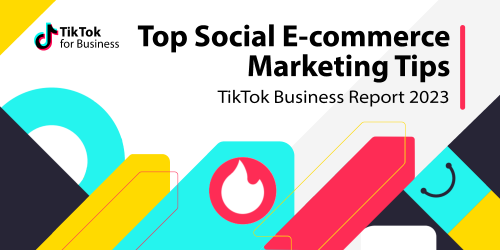To carve a niche in the fashion industry or establish a successful clothing brand, it's crucial to align with a reliable clothing supplier. The right partnership ensures product quality, which is foundational to brand trust and reputation.
The global apparel market, which stood at 1.53 trillion US dollars in 2022, is projected to touch 1.7 trillion by 2023. In the ever-evolving world of fashion, apparel gracefully walks the tightrope between a basic necessity and an epitome of luxury. From everyday wear like socks and underwear to the dazzling outfits reserved for special occasions, the spectrum is vast. Recognizing the immense potential, many entrepreneurs venture into this lucrative market. Additionally, Statista forecasts that the global fashion e-commerce market will be valued at over 820 billion U.S. dollars in 2023. By 2027, this figure is projected to surpass 1.2 trillion U.S. dollars, showcasing the undeniable appeal of the industry. However, the cornerstone to unlocking this potential lies in selecting the right supplier.
This article delves into the nuanced journey of establishing a thriving fashion brand. A significant emphasis will be laid on the pivotal role of sourcing top-tier apparel and reliable clothing suppliers.
Blueprint for Launching a Successful Fashion Brand
a. Market Research - The Foundation of Every Fashion Brand
Before crafting the first design or selecting fabrics, understanding the market is paramount. This doesn't just mean identifying trends but understanding the complexities of the industry, discerning the needs and desires of your target market, and recognizing the competitive landscape.
b. Constructing a Profitable Business Framework
A successful fashion brand is an amalgamation of creativity and strategy. From meticulous business planning to astute pricing decisions, it's a comprehensive roadmap to profitability.
Strategizing with a Business Plan:
Dive beyond designs and delve into the intricate mechanics of the fashion business.
Incorporate thorough market analysis, financial projections, marketing blueprints, and operational strategies.
Pricing for Profit:
Strike a balance between production costs, perceived value, and profit margins to determine a price point that ensures business growth and customer satisfaction.
Choosing Your Business Model:
Decide between handling production in-house or collaborating with external partners.
Consider shipping if you wish to steer clear of inventory or production hassles.
Manufacturing Your Clothing Line: How to find quality clothing suppliers and manufacturers?
The viral LinkedIn post, “I'm shutting down my clothing brand.” by Clémence Lepers, which garnered over 2.5 million views, encapsulates the challenges in the apparel manufacturing realm.
The decision to shut down shed light on the complexities of apparel manufacturing:
- The majority of top-tier clothing manufacturers are based in Vietnam.
- They possess the capability to produce a wide range of products.
- Premium manufacturers often demand high Minimum Order Quantities (MOQs).
- Shipping costs continue to rise.
- There's a risk of receiving defective products.
When considering a clothing supplier, you'll first need to ask yourself whether you want to work with domestic manufacturers in the country you reside in or from overseas clothing manufacturers, like in Vietnam or India. Reflecting on Clémence's experience, it's evident that many of the industry's premier manufacturers are situated in Vietnam.
KachingHub stands as a global enterprise with its foundational supply chain system rooted in Vietnam. This strategic positioning empowers our international team to precisely interpret and convey your sourcing needs to Chinese manufacturers and factories, leveraging their profound industry expertise.
Criteria for Selecting an Exceptional Supplier
Selecting the right supplier comes with its fair share of challenges. Before finalizing your decision, it's crucial to consider certain points. For SMBs (small and medium businesses), teaming up with a dependable, adaptable, and scalable wholesale supplier can be transformative. Below are the essential criteria to keep in mind when choosing the ideal supplier for your business.
1. Cost Efficiency
Purchasing in bulk from a wholesaler helps reduce per-item costs, bolstering profit margins and ensuring you remain competitive.
2. Product Quality
Leading wholesale suppliers prioritize products that meld trendiness with durability, comfort, and style, creating a foundation for strong customer loyalty.
3. Product Diversity
Top suppliers provide a broad selection of products catering to various styles and preferences, enhancing the range you can offer to your audience.
4. Brand Eminence
Collaborating with a recognized wholesaler can elevate your brand's image and credibility in the marketplace.
Discovering Trustworthy Wholesale Suppliers
A. Attend Trade Shows and Exhibitions
Trade shows and exhibitions are excellent platforms to connect with fashion clothing suppliers. Attend relevant events in your industry to explore a wide range of suppliers, network with industry professionals, and discover new trends and designs.
B. Online Wholesale Platforms
For many business owners, online platforms are the go-to sources for wholesale clothing.
C. Directories
Local and Online directories dedicated to fashion industry sourcing can provide a wealth of information and connections. Websites like Dealar, Alibaba, Thomasnet, and FashionGo are popular platforms where you can search for fashion clothing suppliers based on specific criteria.
D. Social Media
Social media platforms, such as Instagram and LinkedIn, can be powerful tools to connect with fashion clothing suppliers. Follow industry influencers, join relevant groups, and actively engage with the community to discover potential suppliers and gain insights into their reputations.

